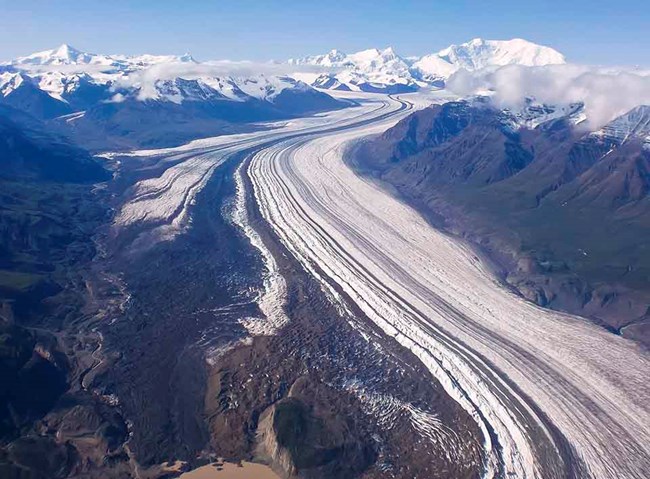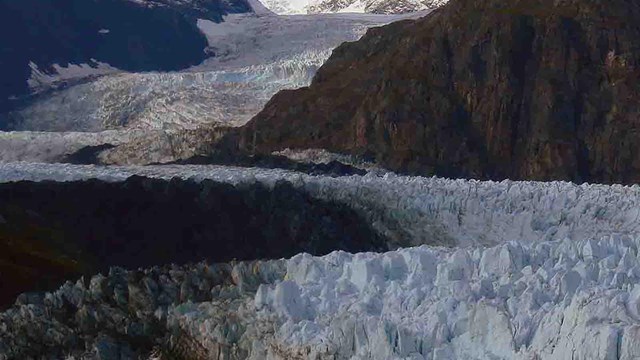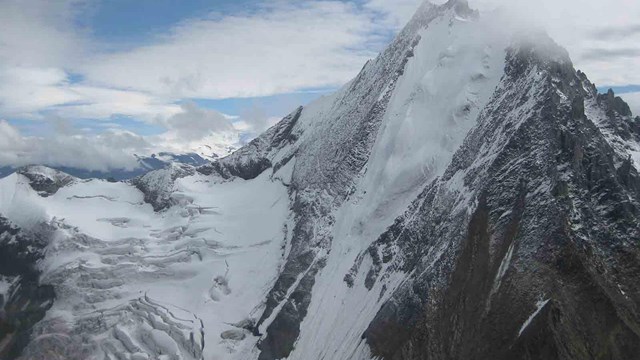
NPS/Bev Goad
Glaciers tell stories of the Earth's history; they shape the Earth's surface as they move and form valleys and mountains. Glacial ice documents weather and life from many years past. Tidewater glaciers are those that terminate in the sea. The ice that calves off these glaciers provide important habitat to ice-dependent species, such as seals.
What was the glacial extent in Alaska during the Pleistocene? Check out the Alaska PaleoGlacier Atlas.
Alaska's Shrinking Glaciers
Alaska is one of the most heavily glaciated areas in the world outside of the polar regions. Approximately 23,000 square miles of the state are covered in glaciers—an area nearly the size of West Virginia. Glaciers have shaped much of Alaska’s landscape and continue to influence its lands, waters, and ecosystems. Because of their importance, National Park Service scientists measure glacier change. They have found that glaciers are shrinking in area and volume across the state.
The effects of climate change are felt more in high-latitude regions like Alaska than in most other regions of the world. Over a 50-year interval—between the 1950s and early 2000s—glaciers within Alaska national parks shrank by 8%. From 1985 to 2020, glacier-covered area in Alaska decreased by 13%, indicating that the rate of glacier loss accelerated in recent decades. As our climate continues to warm, glacial retreat will likely accelerate, profoundly impacting the landscape of Alaska and our parks for generations to come.

Sensitive to seasonal variation in temperature and precipitation, glaciers are excellent indicators of regional and global climate.

Glaciers are inextricably tied to climate and the hydrological cycle, providing base flow to major rivers in Central Alaska.
Glacier Terminology
Ablation
the retreat and degradation of glaciersAdvance
glacier flow exceeds ablation and the terminus extends beyond its previous pointCalve
process of ice breaking off at a glacier's terminusCrevasse
a large crack in the surface of a glacier produced by the stress of glacial flowHanging
a glacier that clings to the side of a steep mountain or one that terminates at a cliffMoraine
a deposit of rock debris shaped by glacial flow and erosionTidewater Glacier
a glacier that terminates in the sea and discharges icebergs and other small pieces of iceTerminus
the lower end, or snout, of a glacierLearn more about glaciers
Last updated: November 9, 2023
